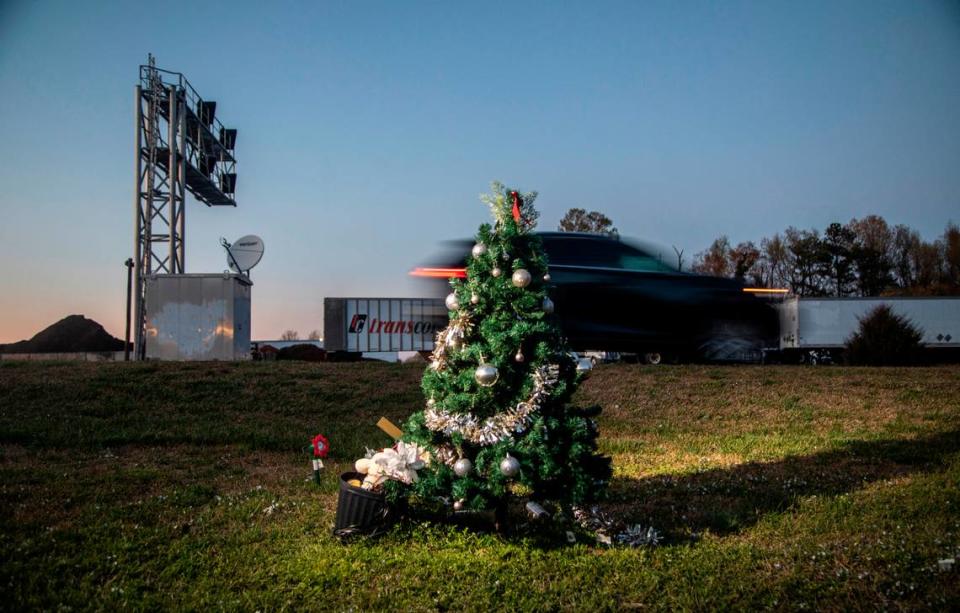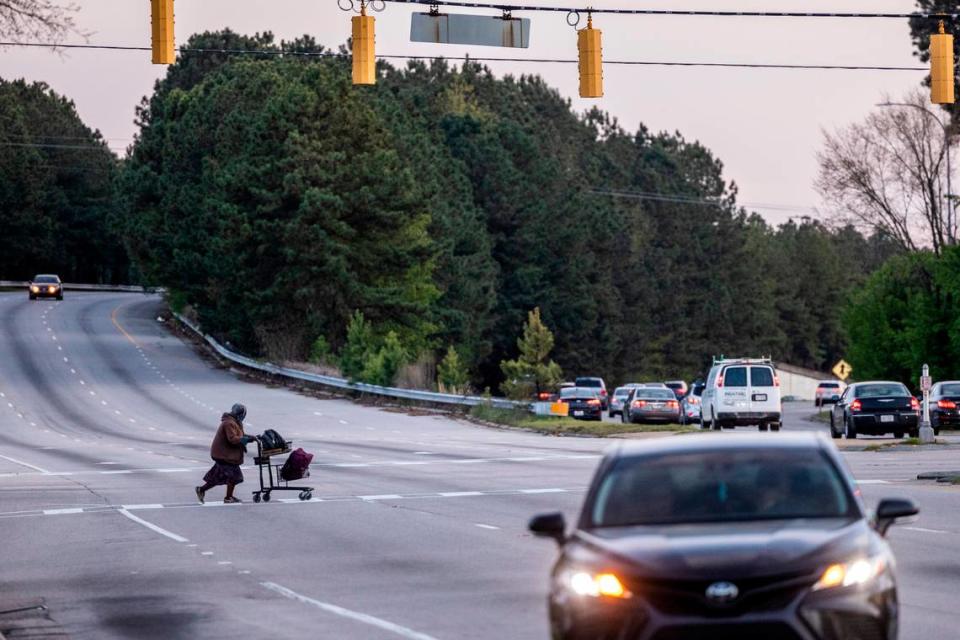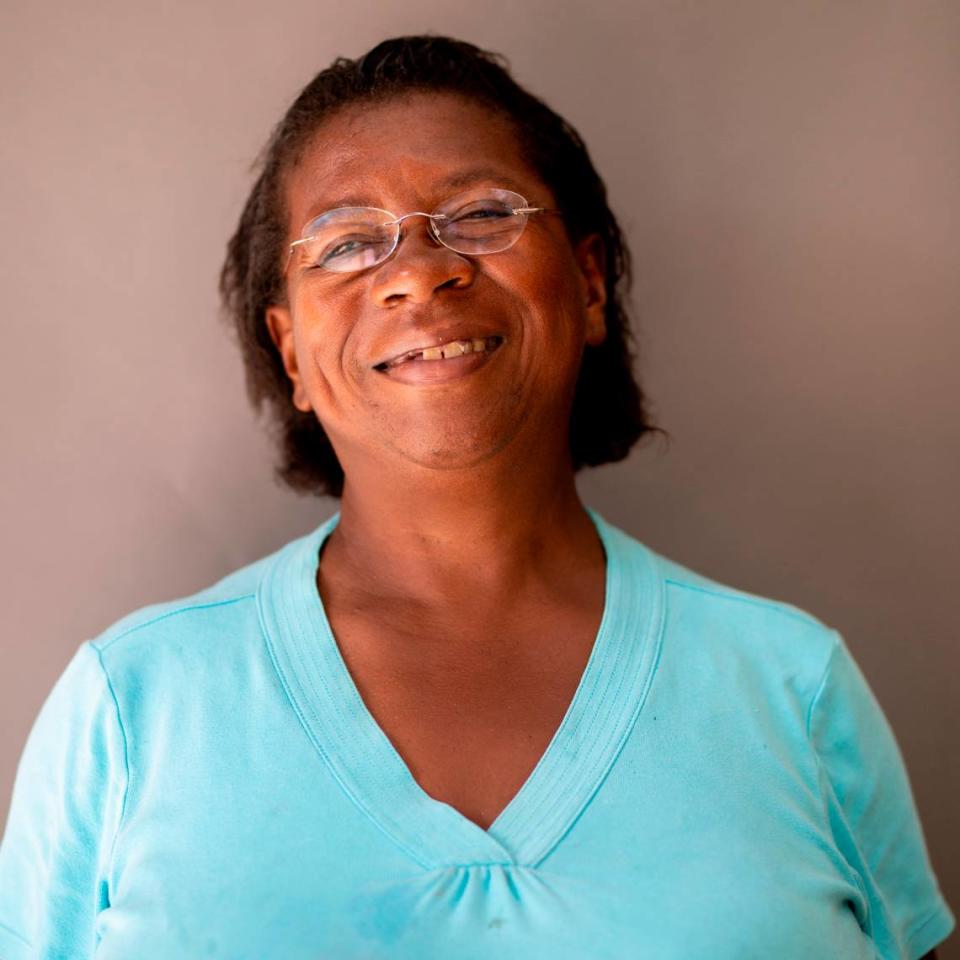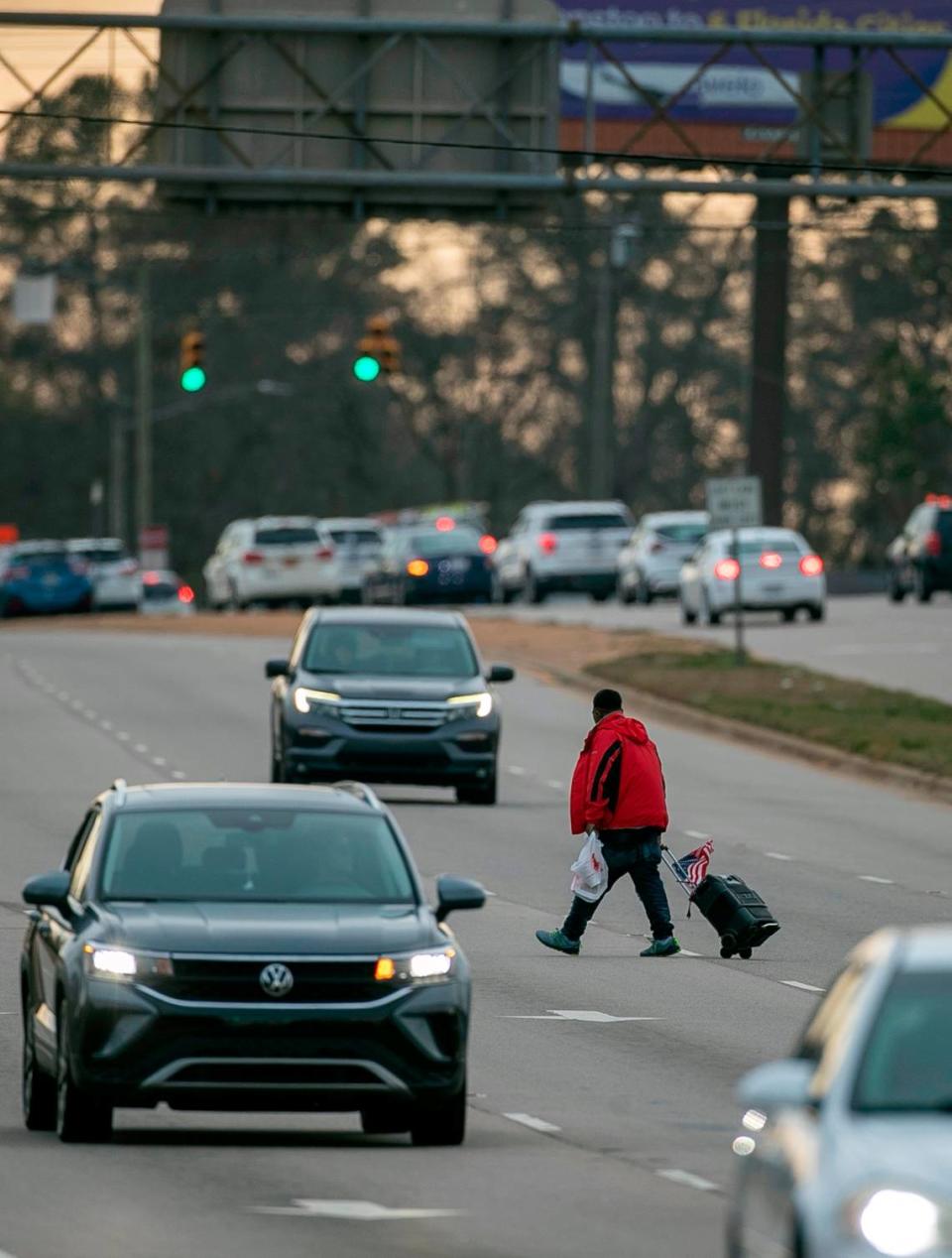Pedestrian deaths spiked in Raleigh last year. Why? And what can be done to fix it?
Diane Marie Bass, 59, was walking on the shoulder of Capital Boulevard before dawn on an August Sunday morning when the driver of an SUV drifted off the road and hit her going 55 mph.
Ronge Mwanakyungu, 27, was attempting to cross a stretch of New Bern Avenue that lacks street lights and crosswalks shortly after 8 p.m. in late November when a car hit him.
And Samantha Briggs was hit about 7:30 p.m. the day after Thanksgiving as she and four others attempted to cross a dark stretch of Hillsborough Street after a trip to a Sheetz convenience store. Police say the driver swerved into the center turn lane where Briggs was standing and kept driving. She was 12.
Bass, Mwanakyungu and Briggs were among 27 pedestrians hit and killed in Raleigh last year. Two others died on highways just yards outside the city limits.
The number of people hit and killed while on foot is a growing national problem. Nearly 7,500 pedestrians died nationwide in 2021, according to the Governors Highway Safety Association. That’s up 74% since 2010 and was the most pedestrians killed in a single year in the U.S. in four decades.
But last year’s toll in Raleigh was particularly striking. The 27 fatalities handled by the Raleigh Police Department was more than three times the annual average since 2006, according to the N.C. Division of Motor Vehicles.
“The number should be zero,” says Jonathan Melton, a City Council member who has spoken out about the need to improve pedestrian safety.
There’s no simple explanation for the rise in pedestrian deaths. Those who work in highway safety or respond to crashes cite a number of factors that may contribute, including cellphones and digital dashboards that distract drivers; the popularity of SUVs and other large vehicles that are more likely to kill a person they hit; changes in traffic patterns during the pandemic that allow drivers to go faster; and a growing number of people walking on roads that weren’t built with them in mind.
“There’s a really a lot going on,” said Laura Sandt, director of the Pedestrian and Bicycle Information Center at UNC’s Highway Safety Research Center in Chapel Hill. “It’s a very complex issue, and what we see are changes at the nexus of people and vehicles on roads that weren’t really designed for people and vehicles to be interacting.”

The circumstances around each fatal crash involving a pedestrian differed last year, but there are patterns. Only seven of the 29 fatalities in and around Raleigh took place during the day; the rest occurred after dark, when drivers may be drowsy, impaired or simply have a harder time seeing what’s ahead but often drive faster because there’s less traffic.
Speed is another common factor. Three people were killed in parking lots and a fourth during the Raleigh Christmas parade. Twenty-one of the remaining 25 were hit on roads where the speed limit was 45 mph or higher, including five on interstate highways.
Road planners and builders need to do a better job of delineating when a road is a highway built for speed and when it’s a street where pedestrians are present, says Shaileen Bhatt, the Federal Highway Administrator.
“The data is incontrovertible: When you get speeds below 20 mph, crashes with pedestrians will result in injuries, not in fatalities,” Bhatt said in an interview. “When you get over 25, 30 mph, you’re not going to the hospital, you’re going to the morgue. So if you want cities to feel like they’re more welcoming to pedestrians, we need to reduce speeds inside the cities.”
Raleigh is doing that on neighborhood streets and downtown where large numbers of people walk. The city is gradually reducing speed limits on residential streets to 30 or 25 mph and installing speed humps and other measures where compliance remains poor. Last fall, the City Council voted to lower the speed limit to 25 mph on all downtown streets, including through streets such as Dawson and McDowell.
But so far there’s little talk about lowering speed limits on the four- and six-lane thoroughfares that carry the bulk of the traffic around the sprawling, 150-square-mile city. Drivers expect to go at least 45 mph on roads such as Glenwood Avenue, Six Forks Road and Capital Boulevard even when those streets are lined with homes, stores, restaurants, hotels and apartment complexes where people walk.
These are the roads where most pedestrians are killed in Raleigh. In a single one-mile stretch of Capital Boulevard in North Raleigh, five people were hit and killed last year.
Diane Bass was one of them.

Hit from behind while walking on the shoulder
Bass was supposed to usher at her church, Christ First Christian Fellowship off Jones Franklin Road, on the morning she was hit.
“We wondered where she was,” said parishioner Wayne Terry. “And then we got the call.”
Bass was a faithful volunteer at the church, where she was known for her upbeat demeanor and the collard greens and fried chicken she brought to church suppers. She was also a regular at the Round Table Fellowship at Pullen Baptist Church, which provides a meal for those who need it two afternoons a week. She would eat, then help with cleanup, said Jim McMahan, a volunteer who knew Bass for several years.
“She was a very hard worker,” McMahan said. “She would kind of stake out certain areas of the kitchen that were her responsibility, usually cleaning. And she would clean everything spic and span.”

Bass did all this even though she was mostly homeless. She would sometimes take cooking and cleaning jobs that provided a place to stay, but she would inevitably end up back outside in various secluded spots off Capital Boulevard, said Rev. Larry Snead, the pastor at Christ First Christian Fellowship.
“It almost seemed like she thrived out there in her tent and on her own and with the individuals that she knew in her community,” Snead said. “I don’t fully understand it, but she was always drawn back out there.”
Bass didn’t have a car and relied on the bus or rides from church members to get around. And she walked along and across some of the busiest roads in the Triangle. She had been hit twice before in North Raleigh, Snead and McMahan said, once requiring a trip to the hospital for a leg injury.
Still, she wasn’t worried about being hit again, said Lakeisha Bass, one of her three grown children.
“She loved to walk. She loved to ride her bike, catch the bus. She liked to move on her time,” Bass said. “And each accident actually wasn’t her fault. It was just people not paying attention to what was in front of them.”
Lakeisha Bass said her mother may have been walking to a convenience store after a late night at a nearby sweepstakes parlor the morning she was killed. It was 2:36 a.m., according to Raleigh police, and she was walking north along a darkened stretch of Capital near Calvary Drive, just up an embankment from where she was living in a secluded clearing. Her death certificate says she died at the address where she lived, 4400 Capital Blvd.
It’s not clear why the 21-year-old driver drifted off the road and hit Bass, propelling her over the guardrail. Police cited “inattention” and charged him with misdemeanor death by motor vehicle.
Snead said he worried about Bass living alone in a tent and getting around on foot.
“I think in general she learned how to maneuver out there. But that place is dangerous, just the whole Capital Boulevard strip,” Snead said. “I see people trying to run across there, maneuver across there, and there’s just a lot of traffic, a lot of lanes there, to maneuver if you don’t know what you’re doing. Or even if you know what you’re doing.”

Fixes planned for two problem areas
The city and the N.C. Department of Transportation are aware of the problems on Capital. They review crash data and meet monthly to talk about hazardous locations and what might be done to improve them, said Sean Driskill, director the city’s new Vision Zero traffic safety program.
In mapping where pedestrians and cyclists have been killed or seriously injured in recent years, Driskill said, there’s a clear correlation with areas where census data shows households are less likely to own a car, including neighborhoods along Capital Boulevard.
“We’ve seen in areas where people don’t have vehicles that there’s more serious pedestrian injuries and fatalities,” he said.
The intersection of Capital and Calvary is one of several across the state where NCDOT will soon test relatively easy, low-cost strategies for protecting pedestrians, said Ryan Brumfield, who heads the department’s Integrated Mobility Division. These entail a combination of paint, hard plastic posts and curb extensions to shorten the length of the crosswalks and force cars to make sharper right turns.
“We expect the treatments to reduce vehicle turning speeds and reduce pedestrian crossing distance, ultimately leading to less exposure and safer conditions for pedestrians,” Brumfield wrote in an email.
Another problem area that the city and NCDOT are working to fix is the intersection of New Bern Avenue and Hedingham Boulevard near where two pedestrians were killed last year on Raleigh’s east side. New Bern Avenue is eight lanes wide here, including turn lanes, but there are no crosswalks, sidewalks or street lights.
The design of the intersection likely dates back to when it was still a semi-rural area, outside the city and beyond where pedestrians were considered, said John Grant, NCDOT’s regional traffic engineer. That design hasn’t changed with the building of a hotel, restaurants and a Walmart Super Center nearby.
“As we continue to sprawl like this, we’ll encounter, unfortunately, developed locations that are like this,” Grant said. “It’s not anything that we’re striving to do, but we’re trying to identify these and correct them as we can.”
Grant said NCDOT and the city are seeking more than $2 million to extend sidewalks and add crosswalks and street lights at the intersection, but there’s not enough money available for these kinds of projects to keep up with demand statewide.
NCDOT would have more money for these kind of fixes if state law didn’t forbid it from spending non-federal money on pedestrian and bicycle projects that aren’t tied to road improvements for cars, said Terry Lansdell, executive director of BikeWalk NC, an advocacy group. Two bills now before the General Assembly would lift that decade-old restriction, but lawmakers have rejected similar efforts in the past.
“So when it comes down to investing in safety improvements, the state legislature said ‘No, it’s not important,’” Lansdell said. “And DOT and our present governor have said that’s the way it is, that cars rule and everybody else needs to fend for themselves.”
Taking human behavior into account
Another challenge for those seeking to protect pedestrians is that few fatalities take place at intersections, where improvements to crosswalks might make a difference. Of the 29 people killed while walking in and around Raleigh last year, only four were at intersections, only two of which had crosswalks with signals.
If people cross a busy road away from an intersection, it may be because they had no choice; the nearest crosswalks to where 12-year-old Samantha Briggs was killed on Hillsborough Street were more than a mile away in either direction, down a darkened road with no sidewalks.
It may also reflect poor judgment, a mistaken belief they could get across before the next car comes. Drivers in several of these incidents made mistakes, too. Police cited drivers in at least nine cases, including five with DWI.
Sandt, the UNC highway safety researcher, said the solution is not to blame people but to plan for their mistakes. That means designing roads and cars with human fallibility in mind.
“The approach is to create environments where it’s harder to make a mistake or where if you make a mistake it’s not as harmful,” she said.
Toward that end, Raleigh recently created its Vision Zero program, following a national movement of local programs to improve driving safety with the stated goal of zero deaths. The city won an $800,000 federal Safe Streets and Roads for All grant to plan safety improvements, which will eventually make it eligible for up to $30 million to carry them out.
Raleigh embarks on its Vision Zero quest just after its worst year for traffic fatalities in recent memory. More than 60 people were killed in crashes last year, nearly double the average over the most recent five years. Of those, more than 40% were pedestrians.
Melton, the City Council member, said despite those numbers, the city’s new program will put it on the right path.
“How the city responds is most indicative of what it says about that city,” he said, “And I think we are taking the steps to respond appropriately.”

